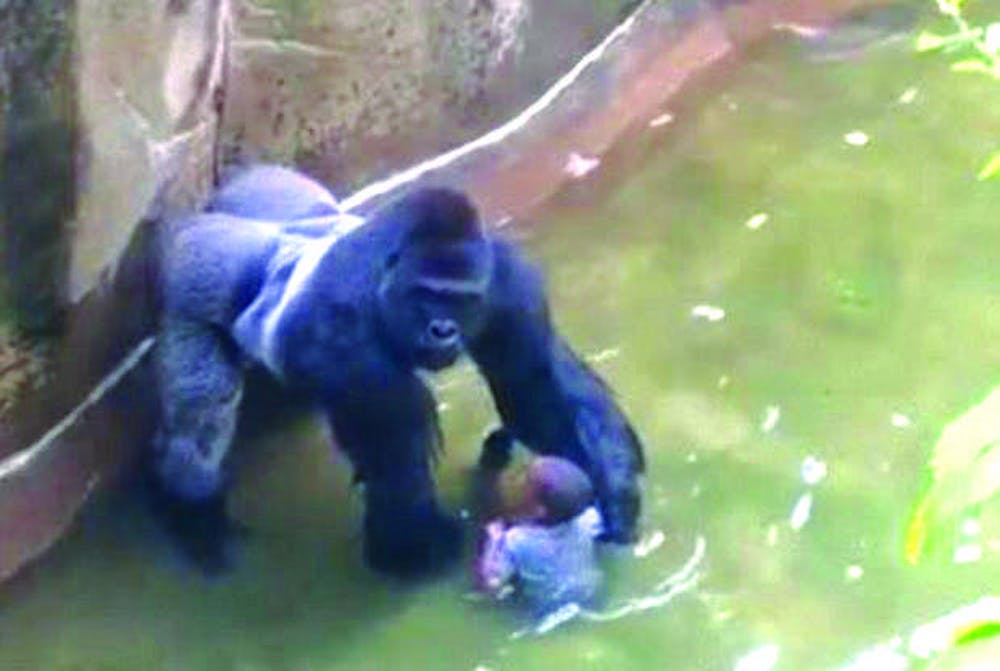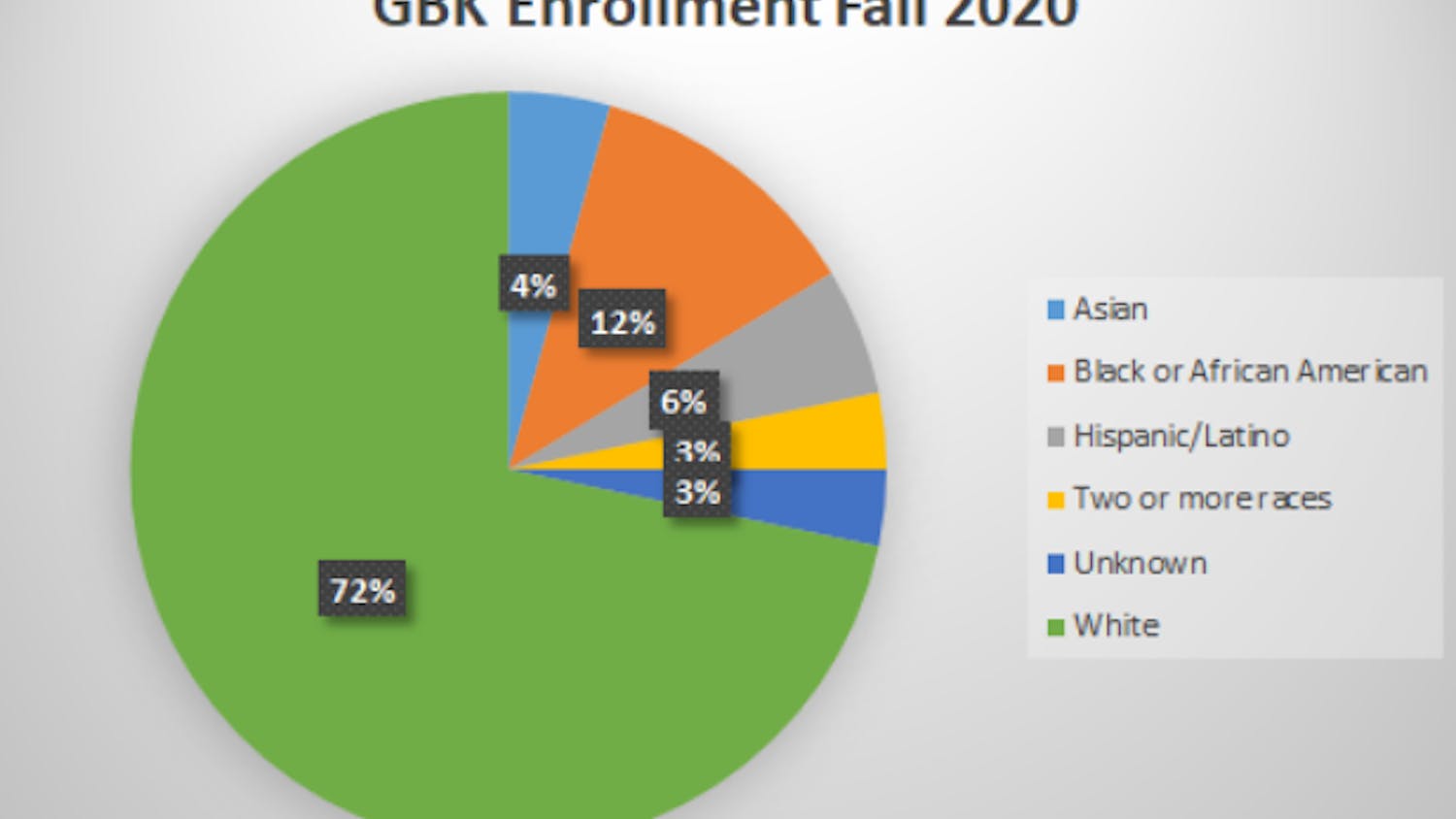Walking through the hallways of residence buildings, it’s impossible to miss the quick sketches of gorillas and the accompanying slogans, “Harambe didn’t deserve it” or “RIP Harambe 2k16.” Although he’s had bathroom stall graffiti, dry erase board murals, and trending hashtags devoted to preserving his memory, not a lot of people know the full story of how one gorilla rose to celebrity status almost overnight.
Harambe was a silverback gorilla at the Cincinnati Zoo. According to the LA Times, on April 28, 2016, a day after his 17th birthday, a zookeeper shot Harambe with a rifle in order to protect a young child who had fallen into his enclosure. A video of the incident went viral, receiving over 12 million views before YouTube removed it. Following the video’s removal, several mirrored and watermarked remakes replaced the original, allowing the footage to spread without being removed again.
A month after his death, Reddit featured Harambe on the front page of their news forum and a Change.org user created a petition entitled “Justice for Harambe,” in which she called for the parents of the child to be “held accountable if the investigation finds that there was negligence involved.” The petition gained over 300,000 signatures in its first two days, and its corresponding hashtag, #JusticeForHarambe, began trending on Twitter, where it became more visible to a broader audience.
In subsequent weeks, news outlets treated Harambe as a legitimate topic, using him as an example to start a conversation about the environmental and ethical dangers of keeping animals in captivity. However, as with anything that spends too long in the limelight, Harambe’s death came to be something of a joke. Various Twitter users began rewriting famous sad songs in his honor, featuring him in tributes with celebrities that had died in 2016, and photoshopping his face onto clouds alongside generic epitaphs.
As they gained popularity, Harambe jokes no longer became limited to Twitter. On July 10th, an Ohio teen and three friends sent error reports to Google Maps, trying to convince employees that their school was on Harambe Drive and not Sharkland Road. Maintenance took their claim seriously and on the following Friday, South High School could be found on Harambe Drive. During Ruby Tuesday’s earnings call, a man calling himself Buddy Fox of the Geneva Roth Holding Company, both of which are fictional names taken from the movie “Wall Street” (1997), asked the restaurant if their fourth-quarter failings were a direct result of Harambe’s death. A group of girls from the Troy, Michigan school district wore shirts that spelled out “Harambe 1999-2016” in their school ID profiles. On August 20th, a hacker managed to take over the Cincinnati Zoo director’s twitter and spammed his feed with tweets in solidarity with #JusticeforHarambe.
After these incidents, the Cincinnati Zoo issued a public statement addressing their late gorilla’s reincarnation as an internet phenomenon. They admonished the public’s treatment of Harambe, as they were still grieving one of their own and making greater strides towards gorilla conservation.
Whether by sparking animal rights movements or internet memes, Harambe, in death, has become so much more than just a gorilla.
The hype about Harambe explained

On May 28, 2016 Harambe, a 17-year-old Western lowland gorilla, was shot and killed by a zoo worker at the Cincinnati Zoo and Botanical Garden.




